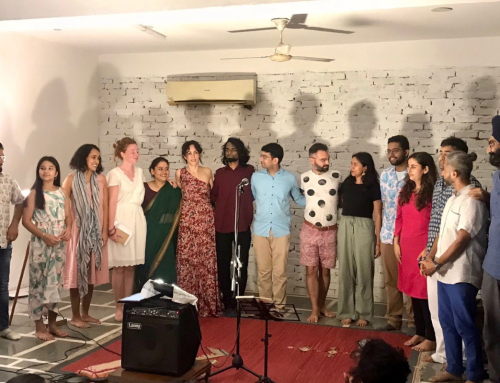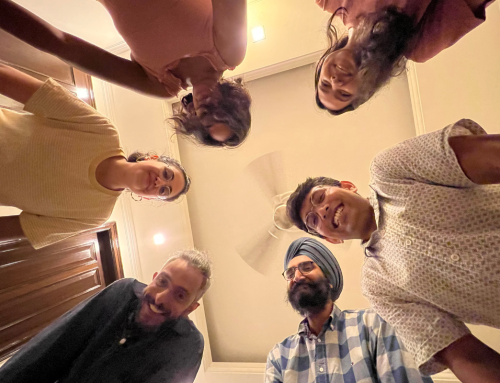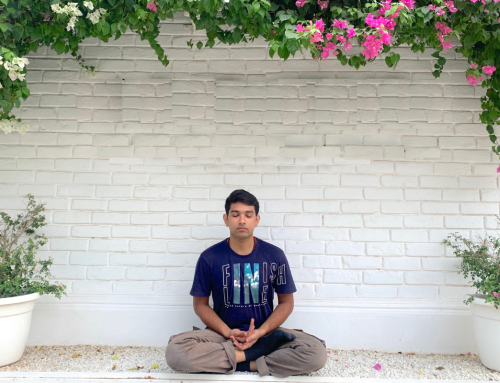Curated and designed by Ankita Naik, Taashi Sharma | 31st August 2022
Edited by Bhanu Sharma and Harmonie Deschamps
Curated and designed by Ankita Naik, Taashi Sharma | 31st August 2022
Edited by Bhanu Sharma and Harmonie Deschamps
We would like to thank Adriano Spampanato, Camille Delaforge. Carles Dorador I Jove and Pierre Cussac – the artists who have been kind enough to collaborate with us for this interview with utmost gusto, sincerity and patience. Also, a special shout out to Harmonie Deschamps and Bhanu Sharma for translating and interpreting their thoughts for us!
When we talk about vocal accompaniment in Western classical music, one of the first things that comes to mind is the piano, used for the main section of the lyrical repertoire, from opera to melody, musical comedy, jazz and from Baroque (17th Century) to the present day.
However, there are so many more beloved polyphonic instruments accompanying the voice in Western Classical Music – each with an equally special journey- the harpsichord, the organ, the lute, theorbo, classical guitar, and accordion – all of which have more focused repertoires than the piano. (The list is not exhaustive, but we will concentrate on the most traditional combinations for this edition)
To truly understand the language and the universe of this bond, what better than to question the greatest specialists of these instruments – who have spent their lives working with singers – themselves. Curating this newsletter has been a fascinating exercise in gathering insights and answers to our questions – each testimony replete with rich and nuanced experiences of artists specialised in duo or trio works.
A word from Harmonie Deschamps, opera singer & faculty of Western classical music at LCVM, as well as artistic director of Ensemble Lilanoor

Growing up, I have been exposed to working with many instruments, especially the piano. This instrument has always fascinated me (infact, it’s always been quite frustrating that I haven’t yet been able to master it)
In the course of my career, I have been lucky enough to meet pianists, harpsichordists, organists, lutenists, accordionists – each one with extraordinary talent, virtuosity and intelligence. They are often called “accompanists” and these semantics seem somewhat reductive to me.
The accompanist is as gifted and accomplished a soloist as the singer – both finding ways to express themselves through their choice of tool. A singer and an instrumentalist must carry out a deep search together; for meaning, , expression, emotion, identity, colours, and more..
I must confess, I wish I could explore the inner workings of these artists’ brains – capable of reducing an orchestral score, of transposing any score into any key, of harmonising on a figured bass, or even of training singers on unknown pieces, whatever the language – all “on sight”! (that is to say by reading the sheet music, most often without even having heard the piece before).
During my studies at the Conservatoire National Supérieur de Paris, I was deeply inspired by the hard work of the students and their teachers, each one as brilliant as the other. I discovered what working as a duo entails, and how important it is to seek the advice of accompanists, sometimes even more so than pure vocal work.
For this first issue focused on Western classical singing, it is with great pleasure and warmth that we want to honour and highlight these incredible musicians and artists, too often in the shadow of the singer. We have called upon well established musicians from Europe, aged 35 at most – to share their insights. Each of these artists has a niche expertise and a somewhat special relationship with India, with many of them having performed here already!
Such a collaboration allows us two things – one, to elevate the current young, upcoming scene, and two – something that Lilanoor hold close to our heart – is to create bridges across cultures.
LILANOOR LEXICON
WORDS FROM AROUND THE WORLD, TO HELP UNDERSTAND THE JOURNAL BETTER
Baroque: Baroque music is a period or style of Western classical music from approximately 1600 to 1750 originated in Western Europe – between the Renaissance era and Classical era.
Libretto: A libretto is the text used in, or intended for, an extended musical work such as an opera, operetta, masque, oratorio, cantata or musical.
Prosody: Prosody refers to the way words and melody work together in a song. Eg: arrangement of syllables, etc.
Continuo: A continuo is an accompanying part used in Baroque music, which provides a bassline for the other parts and adds harmony.
Affects: It is a doctrine that embraced the proposition that music is capable of arousing a variety of specific emotions within the listener.
Legato: Legato indicates that musical notes are played or sung smoothly and connected. That is, the player makes a transition from note to note with no intervening silence.
How is playing with singers different from playing with other instrumentalists? Do you have any preference, and why?
PIERRE: Basically working with singers is not so different from working with instrumentalists. As long as people listen to each other, the process is pretty much the same. However, some elements have to be taken into consideration such as the text that is being interpreted and presented.
CARLES: Yes, the text is an important element – Infact I believe that’s what makes the two very different, for one simple reason – the singer carries the text. It seems to me a more accessible way of musical expression. Many treatises on early music recommend that the instrumentalist ought to “imitate the voice” – something that can be forgotten when working just between instrumentalists.
And so I prefer the voice because I can imitate it more naturally and it allows me to flow with its affects (“affect” is an essential concept in baroque music, it means “emotion”).
ADRIANO: I too have a preference for working with singers – possibly due to their relationship to the text and to the poetry, which we try to colour with our music. Coming from a southern Italian family, singing was very much a part of growing up at home. I was not lulled by French folk « chanson » but by folk Neapolitan songs, which are quite lyrical by nature. I feel a deep connection with the voice – it is livelier and more flexible. It breathes more!
PIERRE: I’m so happy you mentioned breath! Infact, the notion of breathing – which also exists between instrumentalists- is treated in a slightly different manner when playing with singers. It comes more organically for a singer, because it is intrinsic to his practice than for most instrumentalists.
CAMILLE: Yes! Even for instrumentalists, the idea is to let it breathe: it seems silly but it’s not always a common reflex because some instrumentalists don’t breathe with the music. Moreover, adapting your accompaniment so that this breathing remains musical, requires work.
But overall, I’d say both are exciting to work with – whether a string player or a singer – but they do require different skills.
PIERRE: Hmm, I too don’t have any preference. Some instrumentalists play very “lyrically”, just as some singers blend their voice into the instrumental timbres. The borders are often porous.
CAMILLE: The border are certainly porous, but there are challenges for instrumentalists and vocalists working together.
If the accompanist is not aware of how they can help the singer overcome the difficulty of the piece, such as – by leading in certain places, waiting for him in others, highlighting the nuances, bringing out certain parts instrumentally to help him understand the structure of the musical phrase or even accompanying the singer by placing his left hand bass on his consonants or his vowels, it can create real impediments for the singer to show his best.
But this also means that a whole arsenal of exciting things can transpire in the binomial between the singer and the instrumentalist!
ADRIANO SPAMPANATO
 “At the age of 8, I started playing the piano, purely by chance. I had no exposure to classical music at all as I come from a modest social background – an Italian immigrant family in the East of France. As I had no hobby, my parents made me take private lessons with my school teacher. It was only at the age of 10 that I entered music school – The conservatory of Metz. The same year, I had the chance to replace my teacher as the organist of the village church. Later, I pursued my studies at the National Superior Conservatory of Paris, and started my career as o vocal coach. I also practice chamber music with several singers.”
“At the age of 8, I started playing the piano, purely by chance. I had no exposure to classical music at all as I come from a modest social background – an Italian immigrant family in the East of France. As I had no hobby, my parents made me take private lessons with my school teacher. It was only at the age of 10 that I entered music school – The conservatory of Metz. The same year, I had the chance to replace my teacher as the organist of the village church. Later, I pursued my studies at the National Superior Conservatory of Paris, and started my career as o vocal coach. I also practice chamber music with several singers.”
adriano spampanato
Do you often play as a soloist with singers? If yes, then what aspect of these projects are the most exciting for you?
PIERRE: Yes I do it often, whether with one or more singers – I love working with singers! It allows me to make discoveries and play several kinds of music as the range of styles with the voice is vast. Exploring the possible relationships between the music and the words, allows me a form of creative freedom that I really appreciate.
CAMILLE: Oh I relate with this! The most exciting part of working with my ensemble and in voice-harpsichord recitals is to explore the libretto of an opera, the text of a melody or a corpus. Looking for the linguistic subtleties, or looking for how the composer succeeded in setting the prosody of a text to music fascinates me.
All the more since in baroque music, recitatives are what bring the story to life. The text starts dancing when the continuo creates different colours according to the text’s affects.
Each voice is unique and it is exciting to find how to merge the voice and the instrument according to the two characters of the artists.
ADRIANO: Hmmm. As a vocal coach, one of my biggest responsibilities is to advise singers on all the musical and cultural aspects of the pieces they perform. For example, in the USA I train singers not only on proper pronunciation, but also on all the culture that is associated with European languages such as Italian and French, both of which are maternal languages for me.
I have been playing exclusively as a soloist with singers for 10 years. As a pianist, we replace the orchestra – most repertoire for singers is written, or transcribed for both voice and piano, so in a way we are the accompanying instrument par excellence.
On the organ I play a lot with choirs, whose sound texture I particularly like – the mass sound of the choir in a church is goes perfectly with the very vocal sound of the organ – which is a wind instrument.
CARLES: Ahhh isn’t so exciting how each different instrument adds a different flavour! I rarely work completely alone with a singer, but mainly within what is called the « continuo ». I really like the accompaniment role within the continuo, because I am passionate about being able to mix different instruments.
According to you, what is the most essential prerequisite of working with a singer? What do you personally focus on the most?
CARLES: The most essential element for the accompanist is undoubtedly to understand the text that the singer recites. So, speaking several languages helps a lot (for my part I am Spanish – more precisely Catalan, but I am fluent in French, Italian, English and Arabic).
CAMILLE: Hmm, yes for me as well, working with different languages to understand what the singer is saying is a journey very unique to the accompanist and the singer.
PIERRE: I agree! I think the importance of working with singers stems from the role of the instrument to be at the the behest of the text, which involves a lot of things in terms of playing – nuances, playing modes, choice of musical material, “speaking”, way of playing or sometimes taking a step back.
ADRIANO: Yes sometimes taking a step back is so crucial! As a soloist accompanying a singer in Chamber music, we try to really play “together”, without imposing anything, or encroaching on each other’s space and by establishing a special connection. In my experience, the vocalist often needs more space than the instrumentalist.
But not too much space! (laughs). As a vocal coach, I feel that sometimes my primary role is to support the singers… and to reassure them (laughs)! Help them to trust their voice, their musicality, and help them in a different than their vocal teacher would, by inducing images to nudge their their vocal expression in a more comfortable space.
CARLES: I agree! Our role is to support and guide the singer, to help him refine his approach to music (text, pronunciation, interpretation, nuances, accuracy, etc). This is because the singer, unlike the majority of other Instrumentalists, cannot really hear the sound that he produces “from the outside”, because his instrument is inside his body.
CAMILLE: Which is exactly why, for me, the breath, the legato are the essential keys. A singer who stops leading his line will be in trouble and I myself will be in trouble to lead my continuo. We have to be in total fusion with the singer on his legato and my phrasing.
CAMILLE DELAFORGE
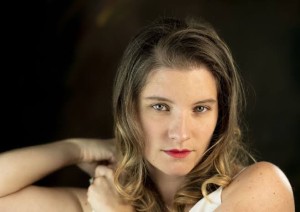 “I am a harpsichordist and conductor. I started my artistic career with dance when I was 5, then I started playing keyboard instruments, especially the harpsichord at 17. After my studies in Paris, I was mainly hired to play the continuo in French baroque ensembles and concerts since that was my specialisation. I was also hired as a vocal coach or assistant conductor in opera productions.
“I am a harpsichordist and conductor. I started my artistic career with dance when I was 5, then I started playing keyboard instruments, especially the harpsichord at 17. After my studies in Paris, I was mainly hired to play the continuo in French baroque ensembles and concerts since that was my specialisation. I was also hired as a vocal coach or assistant conductor in opera productions.
These were my favourite experiences and so I created an ensemble called ‘Il Caravaggio’ five years ago. It is an ensemble devoted to vocal music, from recitals with one or two singers and a few instrumentalists to very large forms such as operas where there are about forty of us. Becoming the leader of an ensemble requires above all management skills, an understanding of the administrative issues that manage the ensemble. We focus on unpublished repertoires of both forgotten female composers and very well known composers whose lesser-played works we no longer necessarily seek.”

“I am a harpsichordist and conductor. I started my artistic career with dance when I was 5, then I started playing keyboard instruments, especially the harpsichord at 17. After my studies in Paris, I was mainly hired to play the continuo in French baroque ensembles and concerts since that was my specialisation. I was also hired as a vocal coach or assistant conductor in opera productions.
These were my favourite experiences and so I created an ensemble called ‘Il Caravaggio’ five years ago. It is an ensemble devoted to vocal music, from recitals with one or two singers and a few instrumentalists to very large forms such as operas where there are about forty of us. Becoming the leader of an ensemble requires above all management skills, an understanding of the administrative issues that manage the ensemble. We focus on unpublished repertoires of both forgotten female composers and very well known composers whose lesser-played works we no longer necessarily seek.”
Camille Delaforge
What is the most challenging/unpleasant aspect of working with a singer?
CARLES: Sometimes singers tend to think that everything is due to them and they fail to acknowledge the magnitude and difficulty of the work they expect from us. For example, it very often happens that they ask us to change the key of a score the day before the concert.
The continuo player needs to constantly focus his attention on listening to the singer, and conversely. But I sometimes feel that the singer, preoccupied with his inner sound and technique, does not listen to us enough. Even if it is a soft or supporting instrument, we’re not just there to play chords. We support the singer 100%, and we make up for their mistakes too.
Luckily these things happen a lot less with professional singers (with the exception of some divas 😉)
ADRIANO: I’m so glad Im not the only one who feels this way (chuckles). When the singer’s attitude is influenced by an inflated ego, then the singer, who is inherently vulnerable, projects his anxieties and insecurities onto his partner, often in an aggressive manner. I find that unfair.
PIERRE: Agreed! But it’s not just about attitude, it’s also about technique. Depending on the vocal technique (lyrical/classical or not), and in the absence of a sound system, the question of acoustic balances may be the most sensitive aspect. But this isn’t always a major dealbreaker – the accordion having a wide sound palette, can often adapt.
CAMILLE: I too would like to highlight the technical aspect. As a conductor, if I feel a singer is technically overwhelmed, I’m going to have great difficulty leading him towards a musical vision of the project.
The artistic exchange is more fruitful when the singer has already totally mastered their technique, their instrument. Once freed of all technical aspects they can be more musically flexible. This is where I find that an artist becomes extraordinary.
ADRIANO: Yes, flexibility also comes in with openness. When the singer comes in with preconceived ideas, it unfortunately makes him inflexible in working with and dialoguing with accompanists. This makes it difficult to do my job as vocal coach and to suggest ways to improve.
CAMILLE: Ah, very important. But all these points are not specific to singers. This is a general comment.
Are there any specific musical or technical challenges related to your instrument, while working with a singer? (repertoire, etc) If yes, did you (as an individual, or with your singer) have to develop other skill-sets/technical know-how to navigate it?
CARLES: My instruments have by nature an “acoustic problem”, they do not have as much power as an opera singer of today, having a very developed technique to fill the huge contemporary theatres.
For context, in the 17th century, madrigals were played in salons which were small spaces. The vocals weren’t necessarily loud, so the balance was good with lute and theorbo. Today, classical singers must develop a much more substantial volume of sound, as they perform with bigger orchestras, and in larger halls.
ADRIANO: For me it’s the opposite, as on a piano, the sound emission is very bright it can tend to overshadow the singer and even an orchestra. I have to constantly be attentive to this and can balance it by focussing more on the left hand (bass) and less on the right (treble).
CARLES: At the same time, we want to take advantage of all the nuances (including the softness) that our instruments offer. We sometimes have to be pragmatic in order to produce an “effective” sound, and develop techniques to expand the sound of our instruments (for example, using the fingernails, which gives more power but less “legato” or flow).
Today, we play with synthetic strings, which are more stretchy to create more sound (originally the strings are made of gut). We also have to adapt to the tones and modern tuning forks and we are therefore inspired by the techniques of instruments such as the classical guitar to make ancient instruments such as the lute evolve.
PIERRE: I’d like to add another perspective to this – while classical instruments may serve as a useful guide, it is not often the case with classical scores. Take the accordion for instance. Historically, the accordion was a folk instrument and not meant for the ‘finer’ classical music.
So I often have to re-interpret pieces that were not initially written for accordion, but for the piano or the voice. It’s great fun! It also allows us to rediscover our repertoire and it’s really exciting.
CARLES DORADOR I JOVE
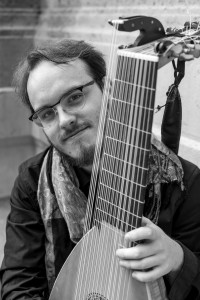 “You could say I’m a Theorbist, lutenist, percussionist, initially trained as a classical guitarist, and am also an oud (Arabic lute, from which the sarod is evolved) specialist. I work in many renowned European ensembles: orchestras, chamber orchestra, notably for opera productions, but also in duos, trios, quartet. My favourite repertoire, linked to the ancient historical instruments that I am associated with, is early music (renaissance – 16th century, and baroque – 17th century) and also oriental (Arabic) music and percussion.”
“You could say I’m a Theorbist, lutenist, percussionist, initially trained as a classical guitarist, and am also an oud (Arabic lute, from which the sarod is evolved) specialist. I work in many renowned European ensembles: orchestras, chamber orchestra, notably for opera productions, but also in duos, trios, quartet. My favourite repertoire, linked to the ancient historical instruments that I am associated with, is early music (renaissance – 16th century, and baroque – 17th century) and also oriental (Arabic) music and percussion.”
CARLES DORADOR I JOVE
Can vocal practice help in understanding your own instrument/music better – could you explain? Do you practice singing in any way and do you enjoy it?
PIERRE: Yes, singing can help the instrumentalist to understand the issues related to playing with a singer. I sing songs with pleasure.
CARLES: (chimes in) Not just understanding the issues- it also helps us to understand the phrasing, the breathing, the emission of sound, the technical characteristics of the song which we can then transpose on our instrument. Thus, we understand better where the singer needs help, especially to breathe.
ADRIANO: Hmm, it is very important and helpful to get the feeling of the phrase while playing to understand the issues of the piece and the singer.
CARLES: (agrees) Yeah, I always practice pronouncing the text in music, in order to feel where the pauses are necessary.
I practice traditional Arabic singing, and its very specific ornamentation. I like to sing baroque pieces by accompanying myself before working with the singer, within the limits of my vocal abilities.
ADRIANO: Oh! Thats so cool! Initially, I would have loved to be a professional singer, but life took me elsewhere. I’m not sure it’s necessary for an instrumentalist to develop a singing technique or even sing well.
Could you share a memory on stage, a project that is special to you? Why?
CAMILLE: I have accompanied many « star » singers, and I learnt so much from these experiences. It’s been striking and exciting for me because I discovered the “sporty” aspect of the job as a singer. They prepare like athletes – both mentally and physically- and become indestructible at the time of the concert. It excites me to discover how to achieve this level of preparation and inspires me in my own work as a leader which is also extremely demanding and requires a strong sense of control and discipline.
PIERRE: A similar sense of inspiration and awe hit me when I heard Mahler’s Kindertotenlieder for the first time during my analysis exam at the conservatory: I was so shocked that I couldn’t write anything.
ADRIANO: In 2018, I participated in the Queen Elisabeth International singing competition in Belgium with the soprano Axelle Fanyo, whom I didn’t know very well at the time. We had never worked together and had rehearsed very little. But I arrived on stage very relaxed, determined to have a great time and we instinctively found a total balance, without one taking precedence over the other. A huge feeling of respect and pleasure, it was very beautiful.
CARLES: I too felt this kind of connection during a small concert for the “Fête de la musique » one of the rare times when I felt a total connection with a singer without a word being said to each other. We just looked at each other instinctively knew where the other was going. We were like one. It was fascinating.
PIERRE CUSSAC
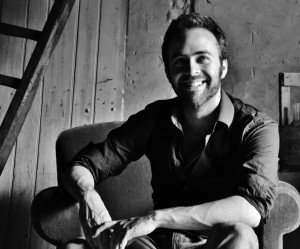 “I started the accordion at the age of 5 in Cantal (mostly rural region in the centre of France). Not being from a family of musicians, the geographical context is important: this instrument holds a central place in the Auvergnat landscape, which influenced my choice. I started with traditional music and the « musette » (repertoire folk bawls in villages : waltz, tango, java…) before being introduced to more classical music, improvisation, jazz… Today my projects that are not just in small formations (from solo to quartet) but also with ensembles and orchestras, make the link between these different aesthetics. The accordion, a polyphonic and transportable instrument, equipped with registrations (like the organ), allows me to participate in a wide variety of projects. I also play the bandoneon and the accordina, two of its cousins.”
“I started the accordion at the age of 5 in Cantal (mostly rural region in the centre of France). Not being from a family of musicians, the geographical context is important: this instrument holds a central place in the Auvergnat landscape, which influenced my choice. I started with traditional music and the « musette » (repertoire folk bawls in villages : waltz, tango, java…) before being introduced to more classical music, improvisation, jazz… Today my projects that are not just in small formations (from solo to quartet) but also with ensembles and orchestras, make the link between these different aesthetics. The accordion, a polyphonic and transportable instrument, equipped with registrations (like the organ), allows me to participate in a wide variety of projects. I also play the bandoneon and the accordina, two of its cousins.”

“I started the accordion at the age of 5 in Cantal (mostly rural region in the centre of France). Not being from a family of musicians, the geographical context is important: this instrument holds a central place in the Auvergnat landscape, which influenced my choice. I started with traditional music and the « musette » (repertoire folk bawls in villages : waltz, tango, java…) before being introduced to more classical music, improvisation, jazz… Today my projects that are not just in small formations (from solo to quartet) but also with ensembles and orchestras, make the link between these different aesthetics. The accordion, a polyphonic and transportable instrument, equipped with registrations (like the organ), allows me to participate in a wide variety of projects. I also play the bandoneon and the accordina, two of its cousins.”
PIERRE CUSSAC
We often call you “an accompanist”, and though the word itself has a positive meaning, the instrumentalist is ideally doing much more than accompanying. What is your opinion about that?
PIERRE: Playing with a singer implies for an instrumentalist to accept that they will be less prominent than him – even if his partner places him on the same level.
It’s not just the performers but also the audience. The public, in 99% of cases, will consider the singer as the “main” performer. This is for many reasons – he carries the text, he embodies it, the vocal performance is more impressive for many, the voice is universal, everyone has one, but few people imagine being able to manoeuvre it in this way… It’s human.
CARLES: Oof, so true! I am strongly opposed to the idea of the solo singer “king” surrounded by their subjects, in the orchestra. Every musician on stage contributes to creating beauty, and we all have our own challenges and struggles.
Solo singers take a lot of risks on stage, they are vulnerable. But we often forget that the accompanist is permanently linked to the singer, and therefore to his vulnerability, and this conditions our playing throughout. Our adaptability must be holistic and our role is also to “catch up” with the orchestra, the singers, etc. I think that perhaps this is sometimes not recognised enough and moreover it is also seen in terms of remuneration for recitals and concerts.
ADRIANO: (adds in agreement) I admit that I find this power dynamic a little annoying, because there is often a notion of devaluation of the huge work we provide…
PIERRE: Thats so true! Though its better than before, this “power relationship” that the public maintains (sometimes in spite of itself) between singers and instrumentalists implies an investment for the instrumentalist made of humility and resignation in the face of the quest for glory! He can’t be considered a soloist in that context and has to just work with that.
ADRIANO: Fortunately, I believe that this somewhat unequal relationship is changing and that more care is taken to value each artist fairly. Singers too, are much less of “divas” than at one time.
CAMILLE: Yes I was just going to say the same – now singers behave in a far more egalitarian with instrumentalists, even in terms of musical exploration. I feel that the challenges that instrumentalists usually face are more acknowledged.
I do think that this egalitarianism should extend both ways. Sometimes instrumentalists think they know more, that they are more theoretically and musically educated, and tend to infantilise singers.
This promises to lead to a spirit of teamwork which involves everyone at an equal level of dedication, all in the service of music, art, and beauty.
The Instrument and the Voice – Across Other Genres
As expressed by the faculty of these departments at Lilanoor
Indian Classical
The form of Hindustani and Carnatic classical vocal music prefers a single musician elaborating his ideas in a certain raga, being supported by a cast of musicians – the tanpura as the canvas on which the artist paints with the colours of the swar, the tabla or mridangam to provide the taal or rhythmic cycle, the boundary within which the musician unleashes their musicality and creativity, and the sarangi and harmonium in Hindustani music. In Carnatic music, there is the violin, for melodic accompaniment. They must anticipate and replicate the most intricate of phrases sung by the vocalist to produce a kind of echo or recapitulative effect.
All of these require high quality musicians and vocalists will usually have their preferred choice of accompanists with whom they share an understanding of their music, what it is trying to convey and the treatment it needs.
How much space they are given to take time to express their original ideas usually depends on the temperament of the vocalist, but it is generally agreed upon that the Carnatic music format allots a clearer, uninterrupted and prolonged space for the instrumentalist.
We have also begun to see more jugalbandi’s (duets) between vocalists and instrumentalists in recent times, with instruments like the flute, sitar, sarod and sarangi now being able to imitate the human voice even more closely, as well as singers developing vocal techniques inspired from instrumental music!
– Bhanu Sharma
Western Contemporary
To some extent, in Western contemporary, the voice is looked at as another instrument in the band Or ensemble. It’s true to some extent that vocalists are often looked at as being the front-people of the band so the instruments are pushed to the back a bit, but more and more contemporary artists accompany themselves along with other instrumentalists or even solo, so the distinction is more blurred. However to accompany a solo vocalist is a challenging task since it’s not only about playing the chords and notes, but also about understanding the dynamics of what the singer is conveying and matching that intensity.
– Subhadra Kamath
Lilanoor Monthly Puzzle
There have been several instruments named in this edition of the newsletter. Have you seen or heard all of them before? Try to match them with their images given below! P.S. A lot of them are cousin instruments so they look similar – the key is to spot smaller differences between them!
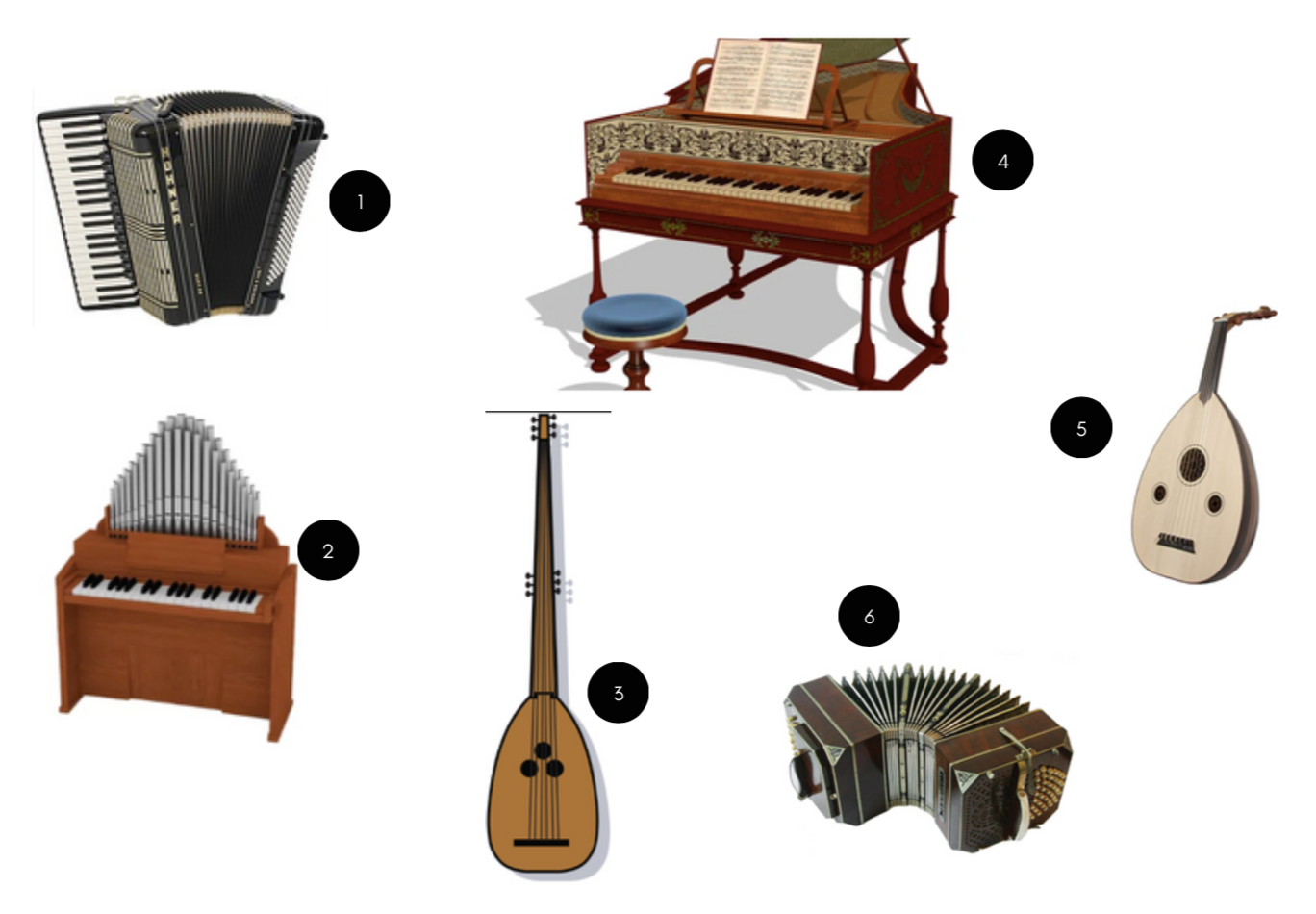
OTHER MEDIA
Puzzle Answer
A. Harpsichord
B. Oud
C. Accordion
D. Theorbo
E. Bandeon
F. Organ

